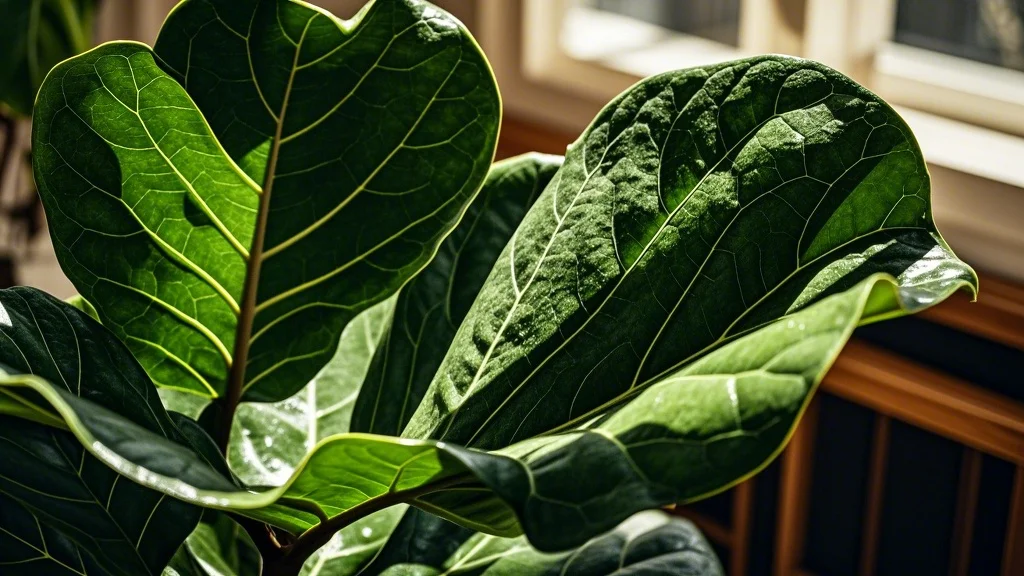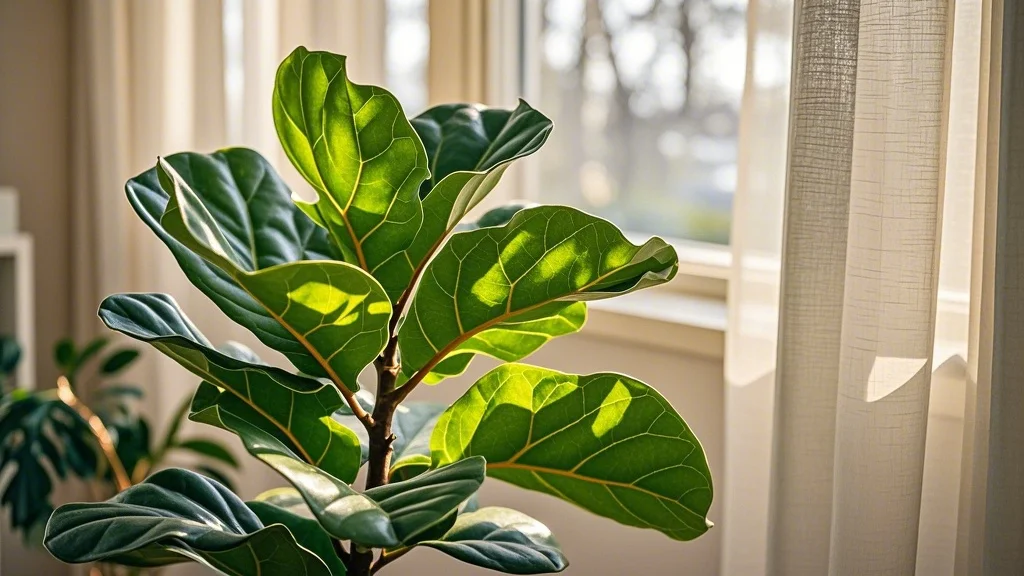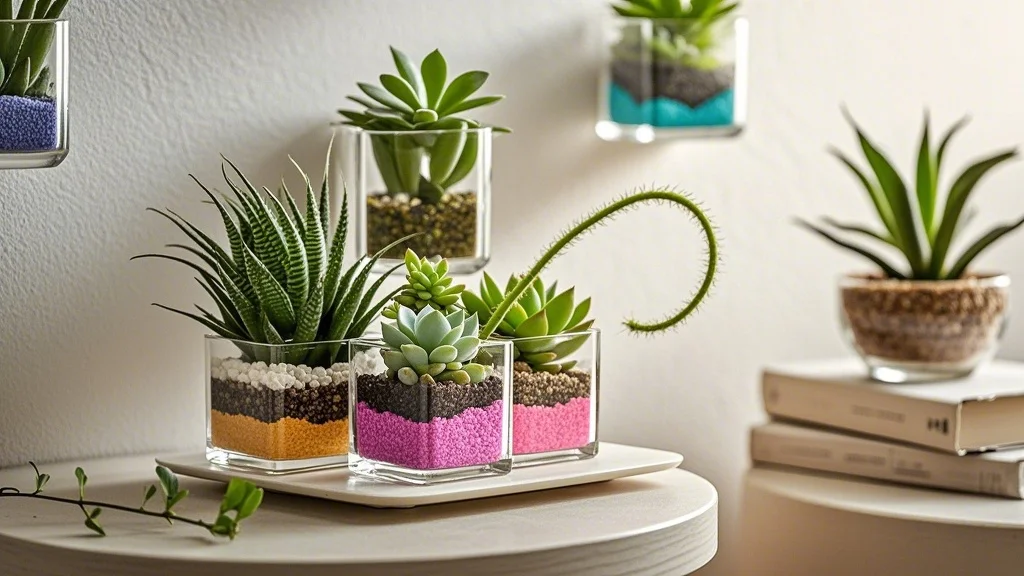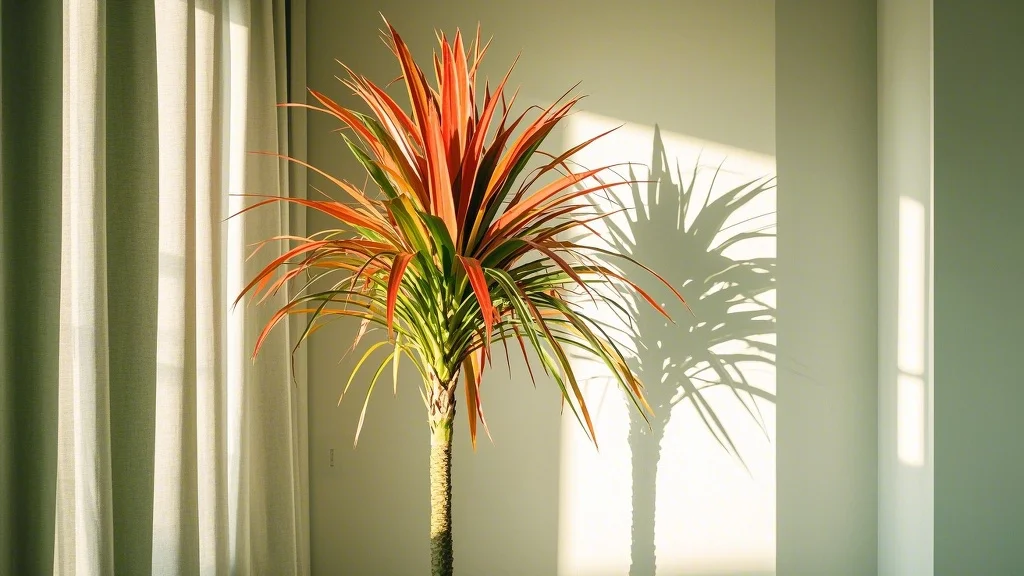The fiddle leaf fig (Ficus lyrata) has become an iconic houseplant in recent years, gracing the pages of interior design magazines and dominating social media feeds. With its large, violin-shaped leaves and striking silhouette, it’s no wonder this tropical beauty has captured the hearts of plant enthusiasts and home decor aficionados alike. However, the fiddle leaf fig’s popularity is matched only by its reputation for being somewhat finicky. In this comprehensive guide, we’ll explore everything you need to know to keep your fiddle leaf fig thriving, from basic care requirements to troubleshooting common issues.
Contents
Understanding the Fiddle Leaf Fig

Native to the tropical rainforests of West Africa, the fiddle leaf fig is a member of the Moraceae family, which includes other popular houseplants like the rubber plant and weeping fig. In its natural habitat, it can grow up to 40-50 feet tall, but as a houseplant, it typically reaches a more manageable 6-10 feet.
The fiddle leaf fig gets its name from its distinctive leaves, which can grow up to 12 inches long and 8 inches wide. These glossy, dark green leaves are shaped like violins or fiddles, with prominent veining and wavy edges. The plant’s upright growth habit and large leaves make it an excellent choice for creating a dramatic focal point in any room.
Light Requirements

One of the most critical factors in fiddle leaf fig care is providing the right amount of light. These plants thrive in bright, indirect light, which mimics the dappled sunlight they would receive in their natural forest habitat.
Ideal Light Conditions
- Place your fiddle leaf fig near a large, east-facing window for morning sun and indirect light throughout the day.
- A north-facing window can also work well, especially if it receives plenty of bright, indirect light.
- If you only have access to south or west-facing windows, use sheer curtains to filter the intense afternoon sun.
Signs of Improper Light
- Insufficient light: Slow growth, smaller new leaves, and leaf drop.
- Too much direct sunlight: Scorched or bleached leaves, crispy brown edges.
Tips for Optimizing Light
- Rotate your plant every few weeks to ensure even growth on all sides.
- Clean the leaves regularly to maximize light absorption.
- Consider using grow lights during winter months or in low-light environments.
Watering Your Fiddle Leaf Fig
Proper watering is perhaps the trickiest aspect of fiddle leaf fig care. These plants are sensitive to both overwatering and underwatering, so finding the right balance is crucial.
Watering Guidelines
- Allow the top 2-3 inches of soil to dry out between waterings.
- Water thoroughly until water drains from the bottom of the pot.
- Empty the drainage tray promptly to prevent root rot.
- Adjust watering frequency based on environmental factors like humidity, temperature, and light levels.
Signs of Watering Issues
- Overwatering: Yellow leaves, brown spots, drooping leaves, and mushy stems.
- Underwatering: Crispy brown leaf edges, curling leaves, and leaf drop.
Watering Tips
- Use a moisture meter or stick your finger into the soil to check moisture levels before watering.
- Water less frequently during winter when growth slows down.
- Use room temperature water to avoid shocking the plant’s roots.
- Consider bottom watering to encourage deep root growth and prevent overwatering.
Humidity and Temperature
As tropical plants, fiddle leaf figs appreciate warm temperatures and high humidity levels. Replicating these conditions in your home will help your plant thrive.
Ideal Conditions
- Temperature: 60-75°F (15-24°C)
- Humidity: 50-60%
Increasing Humidity
- Use a humidifier near your plant.
- Group plants together to create a microclimate.
- Place a pebble tray filled with water beneath the pot.
- Mist the leaves regularly, but be cautious of water accumulating on the leaves.
Temperature Considerations
- Avoid placing your fiddle leaf fig near drafty windows or air conditioning/heating vents.
- Protect the plant from sudden temperature fluctuations.
- Move the plant away from cold windows during winter nights.
Soil and Fertilization
Providing the right soil mix and proper nutrition is essential for maintaining a healthy fiddle leaf fig.
Soil Requirements
- Well-draining potting mix
- pH range: 6.0-7.0 (slightly acidic to neutral)
DIY Soil Mix Recipe
- 1 part high-quality potting soil
- 1 part perlite or pumice
- 1 part coconut coir or peat moss
Fertilization Guidelines
- Feed your fiddle leaf fig every 4-6 weeks during the growing season (spring and summer).
- Use a balanced, water-soluble fertilizer (NPK ratio of 3-1-2 or similar).
- Dilute the fertilizer to half-strength to avoid burning the roots.
- Reduce or stop fertilizing during fall and winter when growth slows.
Pruning and Shaping
Regular pruning helps maintain the desired shape of your fiddle leaf fig and promotes bushier growth.
When to Prune
- Spring and early summer (during active growth)
- When the plant becomes too tall or leggy
- To remove damaged or diseased leaves
Pruning Techniques
- Use clean, sharp pruning shears to make clean cuts.
- Cut just above a leaf node at a 45-degree angle.
- Remove no more than 10-15% of the plant’s foliage at once.
- For height control, cut the main stem at the desired height to encourage branching.
Encouraging Bushier Growth
- Pinch off new growth tips to promote branching.
- Rotate the plant regularly to ensure even growth on all sides.
- Consider notching (making small cuts above dormant buds) to encourage new branch growth.
Repotting Your Fiddle Leaf Fig
Fiddle leaf figs benefit from repotting every 18-24 months or when they become root-bound.
Signs It’s Time to Repot
- Roots growing out of drainage holes
- Slowed growth despite proper care
- Water draining too quickly through the pot
Repotting Steps
- Choose a pot 2-3 inches larger in diameter than the current one.
- Gently remove the plant from its current pot.
- Loosen the root ball and trim any damaged or circling roots.
- Place fresh potting mix in the new pot.
- Position the plant in the new pot and fill with soil, leaving 1-2 inches of space at the top.
- Water thoroughly and place in a bright, indirect light location.
Common Pests and Diseases
While generally resistant to pests, fiddle leaf figs can occasionally fall victim to common houseplant issues.
Pests
- Spider mites
- Mealybugs
- Scale insects
Diseases
- Root rot
- Leaf spot
- Bacterial infection
Prevention and Treatment
- Regularly inspect your plant for signs of pests or disease.
- Isolate new plants before introducing them to your collection.
- Use neem oil or insecticidal soap for pest infestations.
- Treat fungal issues with a copper-based fungicide.
- Improve air circulation to prevent fungal growth.
Propagation
Propagating your fiddle leaf fig is an excellent way to expand your collection or share with friends.
Methods of Propagation
- Stem cuttings in water
- Stem cuttings in soil
- Air layering
Steps for Water Propagation
- Choose a healthy stem with at least two leaves.
- Make a clean cut just below a node.
- Remove the lower leaves, leaving 1-2 at the top.
- Place the cutting in a jar of clean water.
- Change the water every few days and wait for roots to develop (4-6 weeks).
- Once roots are 2-3 inches long, transfer to soil.
Troubleshooting Common Issues
Even with proper care, fiddle leaf figs can sometimes develop problems. Here are some common issues and their solutions:
Brown Spots on Leaves
- Cause: Overwatering, root rot, or bacterial infection
- Solution: Adjust watering habits, improve drainage, and remove affected leaves
Leaf Drop
- Cause: Stress from changes in environment, overwatering, or underwatering
- Solution: Maintain consistent care routine and address any watering issues
Leggy Growth
- Cause: Insufficient light
- Solution: Move to a brighter location or supplement with grow lights
Curling Leaves
- Cause: Underwatering or low humidity
- Solution: Increase watering frequency and boost humidity levels
Yellow Leaves
- Cause: Overwatering, nutrient deficiency, or natural aging
- Solution: Adjust watering, fertilize if needed, and remove old leaves as they yellow
Conclusion
The fiddle leaf fig may have a reputation for being challenging, but with the right care and attention, it can be a rewarding and stunning addition to your indoor garden. By providing proper light, consistent watering, and optimal environmental conditions, you’ll be well on your way to nurturing a healthy, thriving fiddle leaf fig that will be the envy of plant lovers everywhere.
Remember that every plant is unique, and it may take some time to find the perfect care routine for your fiddle leaf fig. Be patient, observe your plant closely, and don’t be afraid to make adjustments as needed. With a little love and dedication, your fiddle leaf fig will reward you with its majestic presence and lush, violin-shaped leaves for years to come.








